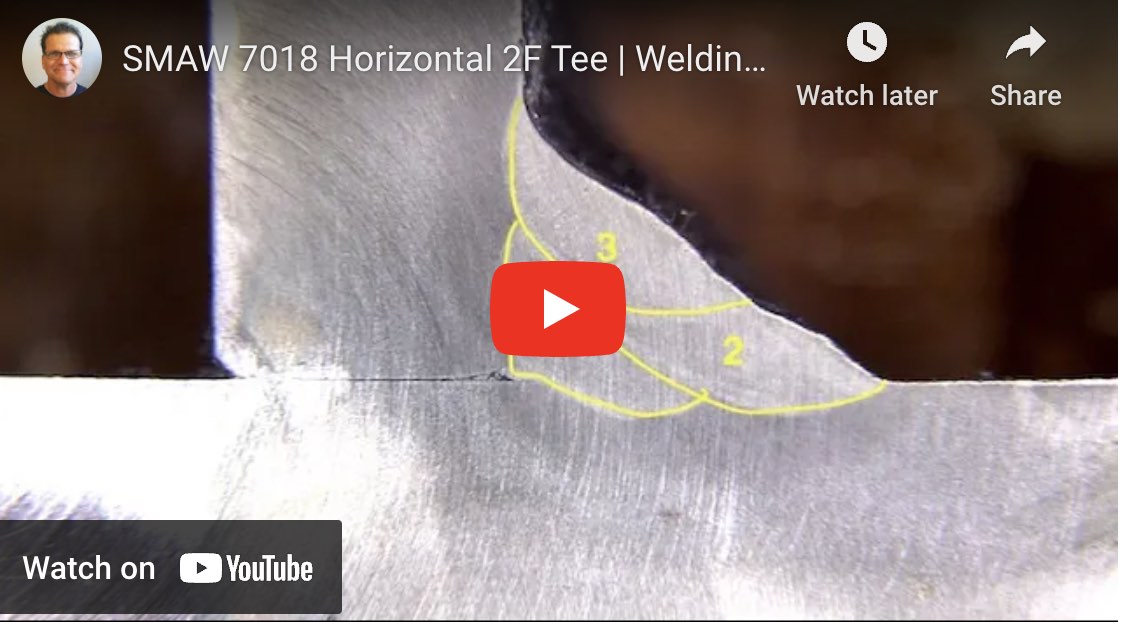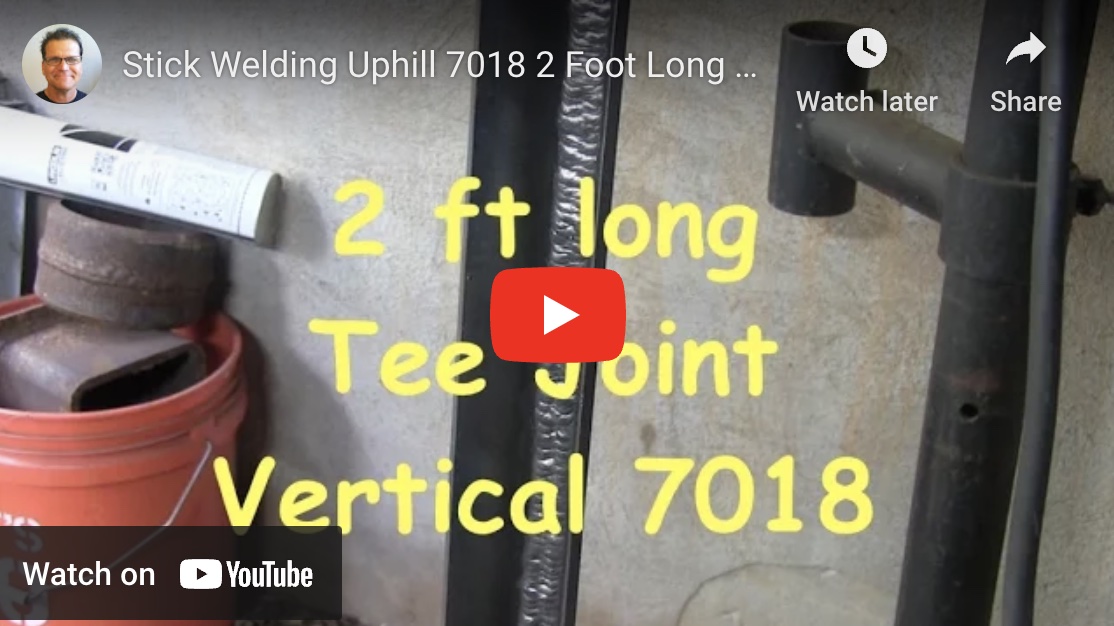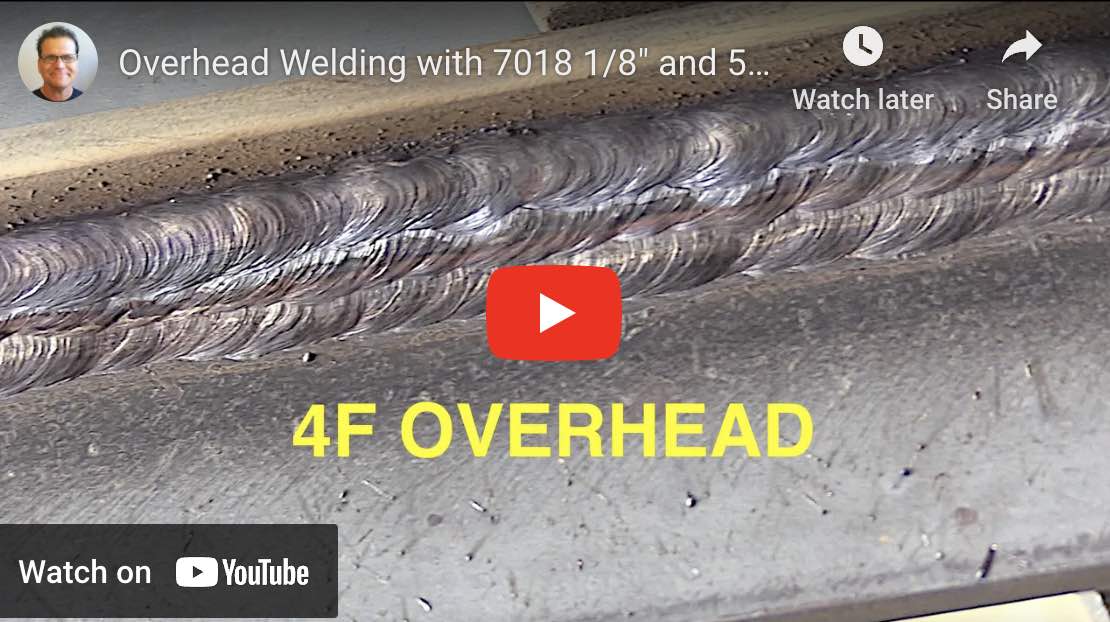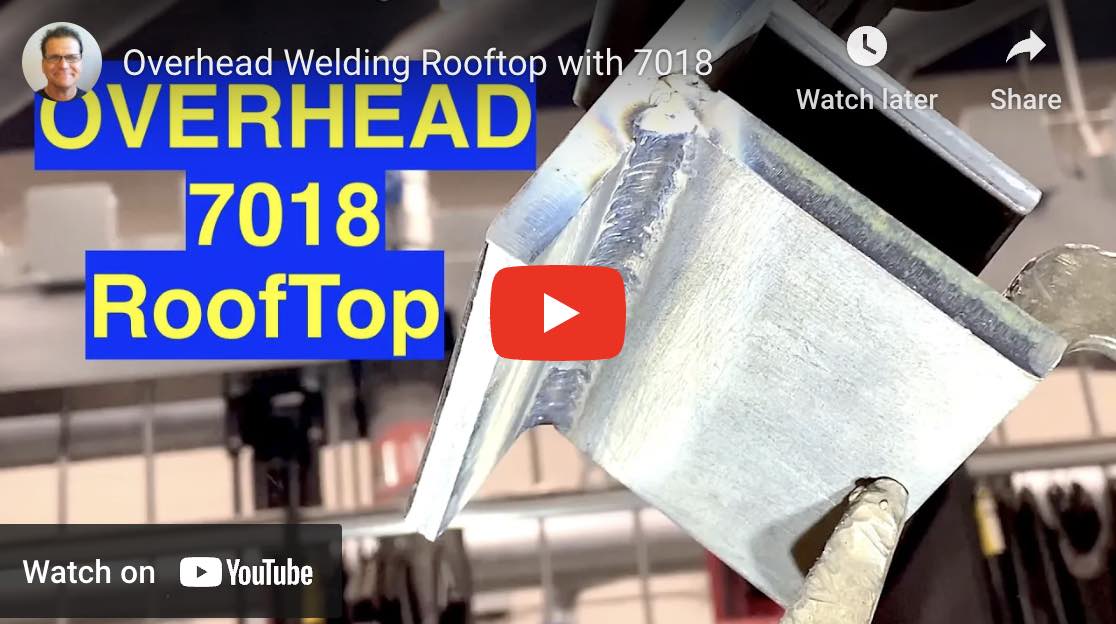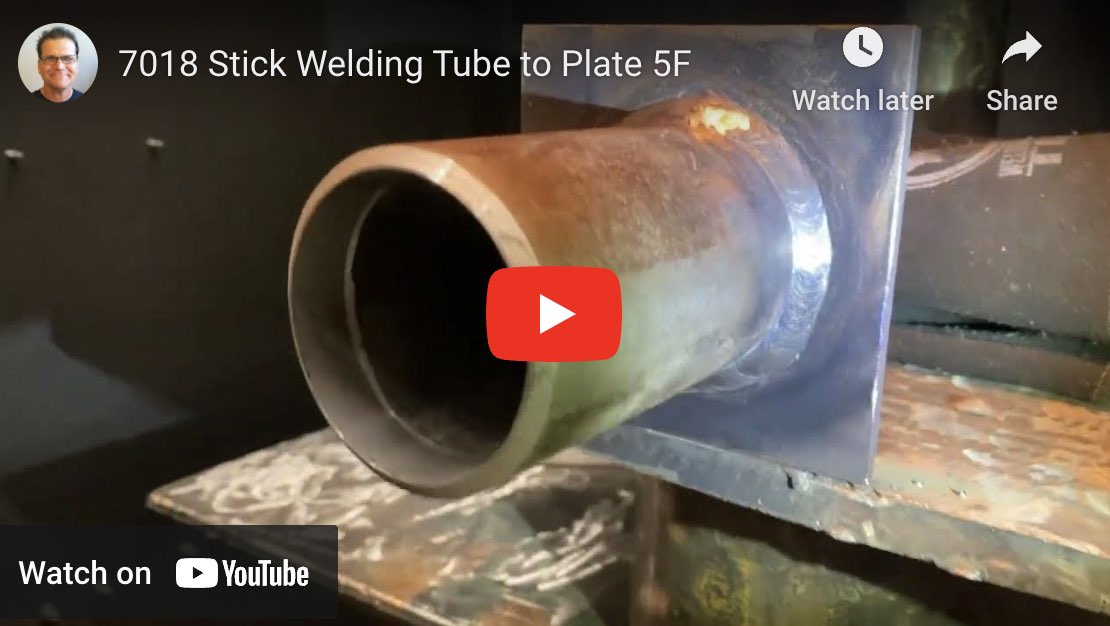7018 Weld Rods
Videos on how to weld with 7018
There are videos here on 3/32" 1/8", and 5/32" 7018 weld rods in all positions.
Clear Arc shots & Clear explanations
video #1 on 7018 weld rods is padding beads
The video above is padding beads using 7018 weld rods.
I dont think there is any better practice than padding beads when you are trying to dial in your 7018 techniques.
Practice stacking beads as close to halfway over the previous bead.
experiment with different amperage settings, arc length, rod angle, rod manipulation, and travel speed.
All the while practice striking your arc in such a way as to not leave any arc visible arc strikes next to a bead.
If you are using a passive lens helmet, then practice setting your adjustments on the head gear to where you can flip the hood down effortlessly without moving your hands.
2F multipass tee joint fillet weld
a 2f multi pass tee joint fillet weld is one of the first few welds you will do in welding school after padding beads.
The skills learned in padding beads and stacking beads evenly will help you with a multipass weld of any kind.
One of the keys to a three bead fillet weld is to place that second bead 2/3 over the first bead...in other words instead of overlapping halfway like you do when padding beads, you need to overlap by at least 2/3 in order to prevent valleys or an uneven leg fillet weld.
3f tee joint vertical uphill with 7018 1/8" using an old Miller thunderbolt
You might want to do some padding beads in the vertical position before jumping on a 3f tee joint.
Some procedures call for stringers instead of weaving so practice both tehcniques.
4f overhead tee using both 1/8" and 5/32" 7018 weld rods
Overhead is challenging at first but once you understand how to maintain rod angle and arc length, it becomes much easier.
Some people say this is true overhead. We called it a rooftop position when I was in welding school.
Rooftop tee joints simulate the bottom of a pipe joint better than a 4f tee joint so a rooftop practice tee joint is a good way to practice your overhead skills before you start welding pipe
5f test is a tube to plate weld test where the tube is horizontal and plate is vertical. This video shows a simple 5f fillet weld test using 7018 3/32"
even though a 6g test is a more common welding test to get hired, sometimes a certain fillet weld qualification is needed for a specific weld that might be out of the norm.
A 5f fillet weld test qualifies all positions fillet welds on both plate and pipe so is sometimes used for a more limited qualification because its a quick test.
- HOME
- How to Stick Weld 7018
- 7018 Rods
- 7018 weld rods
More about 7018 weld rods
7018 weld rods and 6010 rods are both commonly used in the welding industry, but they serve different purposes and are chosen for specific applications based on their properties. Here’s why 7018 rods are often used instead of 6010:
### Characteristics of 7018 Welding Rods
1. **Low Hydrogen Content**:
- 7018 rods are low-hydrogen electrodes, which means they produce welds with minimal hydrogen content. This is crucial for reducing the risk of hydrogen-induced cracking, especially in high-stress or thick materials.
2. **Smooth Weld Bead**:
- The welds created with 7018 rods are smoother and have a better appearance. This is important for applications where aesthetics matter, such as in structural steel welding and fabrication.
3. **Mechanical Properties**:
- 7018 electrodes produce welds with good mechanical properties, including high tensile strength and ductility. This makes them suitable for critical applications where the weld must endure high stresses and dynamic loads.
4. **All Position Welding**:
- Although 7018 rods can be used in all positions, they are particularly well-suited for flat, horizontal, and vertical up positions. They are less effective in overhead positions compared to some other electrodes, but they are still quite versatile.
5. **Post-Weld Treatment**:
- The welds produced with 7018 rods often require less post-weld cleaning and treatment, as they generate less slag and spatter compared to 6010 rods. This can save time and effort in finishing the weld.
### Characteristics of 6010 Welding Rods
1. **Deep Penetration**:
- 6010 rods are known for their deep penetration capabilities, making them ideal for root passes and welding on dirty or rusty surfaces. This makes them a go-to choice for pipeline welding and other fieldwork where the conditions are less controlled.
2. **Fast-Freeze Characteristics**:
- The fast-freezing slag of 6010 rods allows for welding in all positions, including vertical and overhead. This makes them highly versatile for difficult positions and applications.
3. **Flexibility and Adaptability**:
- 6010 rods are more flexible in terms of welding on less-than-ideal surfaces, such as painted or contaminated materials. They are often used for the initial root pass in a multi-pass weld because of their strong arc force and penetration. 6010 rods can be used downhill or uphill
### Reasons for Choosing 7018 Over 6010
1. **Structural Integrity**:
- For structural steel welding, where the welds need to be strong and free from defects like hydrogen cracking, 7018 rods are preferred due to their low hydrogen properties.
2. **Appearance**:
- The cleaner, smoother welds produced by 7018 rods are often required in applications where the weld's appearance is important, such as in construction and metal fabrication.
3. **Ease of Use in Controlled Environments**:
- In shop environments where conditions can be controlled, the 7018's need for clean surfaces and dry storage is not a major issue, making them ideal for creating high-quality welds with consistent properties.
4. **Mechanical Properties**:
- When weld strength and ductility are critical, such as in structural applications, 7018 rods provide the necessary mechanical properties.
7018 rods are often chosen for applications requiring high strength, low hydrogen content, and smooth, aesthetically pleasing welds.
But in order to maintain the low hydrogen properties, 7018 rods must be kept unopened or be kept in a rod oven at specific temperatures.



